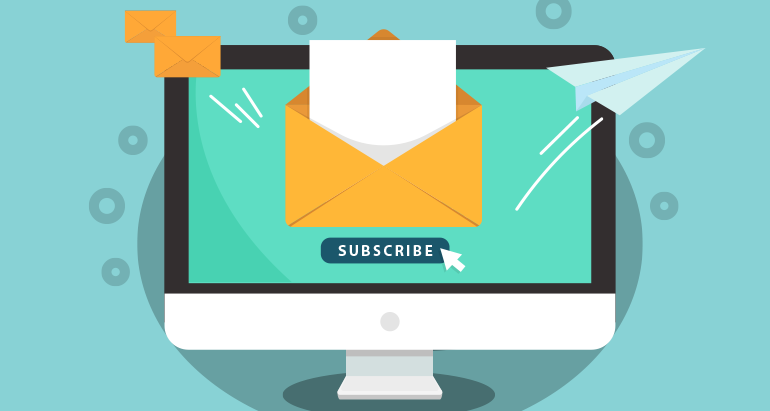
Do Popups Increase Conversions or Just Annoy Visitors?
By Lindsay Valenty -
When you think of "popups," what is the first thing that comes to mind?
82% of people surveyed by Learn G2 stated that they hated popups.
And this seems to be a universal sentiment.
That said, a case study by Optinmonster found websites that incorporate popups see an increase in conversions of up to 2100%. 2100%!!!
So how do marketers convert that visceral hate into love? Let's dive into what people hate about popups and discuss ways to get people to love them.
Before we start, we should probably clarify what a popup is.
Popups are small windows that grab a user's attention once a website loads.
Popups come in various types, such as full-screen, sidebar, and banner.
They are generally used to accomplish any number of things, including but not limited to:
• Newsletter Sign-up (email ask)
• Campaign Highlight
• eBook Download
• Event Spotlight
Now that we've discussed the types of popups and why you may want to utilize them, let's go into why people hate them and how to get them to love them.
They pop up the INSTANT they hit your website.
Most entry points for your web visitors will result from a web search, which means they are hitting your site looking for specific information.
To avoid "popup blindness," where the user automatically clicks out of your popup as soon as they hit your page, adjust the timing of it.
There are a few types of timing that you want to look at when it comes to setting up your popup:
• Time on page (scroll amount)
• Time on site (or page views)
• Specific date or time
• Exit-intent
You can set up parameters for the timing of the first two. For example, you may wait until the visitor has been on your page for 10-15 seconds before it triggers a popup. Or you may have it wait until they've scrolled 20% of the way down your page.
Delaying your popup by allowing the visitor some time to explore your site and what it's about will increase your chances of them stopping to look at your popup versus clicking out of it instantly.
When it comes to the amount of time and/or pages they've visited, you can also set up parameters for that.
Perhaps you will wait until they've been on your site for at least a minute or once they hit that second page.
Additionally, if your promotion/campaign only goes for a set amount of time (say a holiday-related sale or fundraising campaign), you can create specific parameters for that.
When it comes to exit intent, your popups could be a coupon code if they're getting ready to leave your shop page or a free ebook related to the article/post they just read.
In another survey by Optinmonster, exit popups can reclaim 10-15% of abandoning visitors. That's a great return with little effort on your part.
They fill the whole screen.
Keep size in mind when deciding what type of popup you want to use. Many people use their smartphones when browsing the internet, so having a large popup that requires them to scroll to close it could immediately put them off.
Ensure it's easy for the viewer to exit the popup. All popups that you generate should be mobile-friendly.
Allowing your viewer to opt out is crucial for leaving a positive impression on the people who visit your site. Ensure that another doesn't immediately replace it once they opt out of a popup.
They aren't even relevant to the viewer.
There is a way to set up different popups triggered by the viewer's behavior instead of just a blanket catch-all popup.
Utilizing a popup unique to the behaviors and wants of the person visiting your page will garner better results. As we've mentioned in the past, personalization is critical.
A/B testing is excellent for this. Knowing what messages/imagery get the best feedback will pay dividends on your next popup campaign.
If you're offering an incentive, ensure it's enticing and relevant to the viewer's wants. Whether it's a discount, a raffle to win, or an exclusive offer, ensure that it makes sense with the visitor's needs.
They don't make sense.
In this instance, the popup asks you a question with only two response options, and the negative one is so absurd that no one would ever click it.
Although using two-step opt-in popups like this can be very effective (studies have shown they can boost conversions up to 785%), it's important to craft them in a way that doesn't insult anyone's intelligence.
Instead, infuse a dash of humor into your popup. Humor is a great way to diffuse a potentially annoying situation, not to mention it is likely to leave a longer-lasting impression.
They are boring and easy to forget.
Using compelling and memorable visuals is an excellent way to craft a popup that will convert.
Unique shapes, bright colors, and pictures of the product/service are great ways to engage the viewer immediately.
Don't forget that your popup should match your branding. That doesn't mean you should slap your logo on it, but making sure you're using colors, fonts, and images that match your brand standards is a must.
Are popups annoying? Yes, they are. But popups can be one of your digital arsenal's most powerful conversion tools by thinking like a consumer and tweaking your approaches.
Our digital strategy starts with targeted SEO research and elegant, functional web design—and follows through with data-driven email marketing, digital ads, social media and more. Let’s get digital.